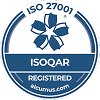Stacy has just started a handmade jewelry brand. While her initial product seemed to be quite popular, she started noticing that the sales simply weren’t reflective of this. No new customers were reaching out, and her older customers weren’t engaging any longer. As her business appeared to stagnate, her mentor advised looking into customer lifecycle management (CLM) strategies to enable business growth.
CLM provides a business-first perspective to the evolving relationship a customer has with a brand. From the get-go, it can help a brand assess customer perception and increase the conversion rate.
Should every business invest in CLM?
Short answer? Yes. However, how and to what extent is often dependent on the goals of the business at the given time. For example, for a start-up still looking to determine a strong product-market fit, customer retention is not a top priority, especially when they aren’t even certain about the product they offer, and how it will likely evolve.
While heavily investing in CLM is not a good idea at the time, it’s still important to execute some basic CLM activities. At this point, perhaps investing in creating a database of existing customers would be a great idea. Set up short email campaigns to ensure your brand remains top-of-mind.
On the other hand, for a more established business, creating a customer lifecycle management strategy can be a strong market differentiator, enhancing trust and catalyzing growth. While many businesses make the mistake of solely focusing on customer acquisition, customer retention can be your ultimate asset. After all, these are customers who already trust your brand. They are much more likely to buy a new product and even reach out to you with feedback compared to a new one. In fact, did you know that increasing customer retention by just 5% can increase profits by 25% to 95%?
What are the key phases of customer lifecycle management?
The best customer experiences are personalized to a customers’ needs and expectations at each key stage of the customer journey. That’s why it’s important to understand the different phases of the customer lifecycle and how you can connect with customers at the time.
The customer lifecycle can broadly be categorized into the following five stages:
STAGE 1: Awareness
This is when your customer just discovers your brand. Do you immediately address an existing need? Is your marketing resonating with your audience? Now is the time for your communication to come into the spotlight.
CLM strategy: PPC ads, SEO, influencer marketing, word-of-mouth
How it helps: By optimizing her blogs with the right SEO, Stacy was able to ensure that the right audience found her brand, while PPC campaigns allowed her to increase visibility and reach more consumers that might be interested in her product.
Moreover, she also roped in the right influencers in her niche to spread the word, thereby increasing reach and gaining recognition within the market.
STAGE 2: Engagement
If all goes well, customers will likely begin engaging with your brand. This could be by browsing your website, going through social media, and even checking out reviews to see what other people are saying about you.
CLM strategy: Nurture email campaigns, personalization, and social proof
How it helps: Once curious customers started exploring Stacy’s website, she realized that they needed an extra push. She added testimonials and reviews from customers on her website and across social media to build trust and even set up a pop-up that encouraged newsletter sign-ups and membership with the incentive of a 10% discount on the first order.
When customers signed up, they were regularly notified of upcoming offers based on the products they had browsed, and those whose carts had been abandoned for a short while got a nudge to purchase with an added incentive.
STAGE 3: Conversion
When prospective customers like what they see, they are more likely to take the plunge. A wonderful product combined with great reviews can be just the thing most audiences need to become a customer! But just because you’ve won them over once doesn’t mean you’ve won them for life.
CLM strategy: Customer Support Optimization, Customer Effort Score monitoring
How it helps: Stacy started seeing more conversions, but there was still something missing. By closely monitoring the Customer Effort Score at various points with a quick survey, she discovered how to make the process from browsing to conversion more seamless, thereby decreasing cart abandonment.
She also included a live chat feature along with an AI chatbot to answer queries and minimize concerns customers may have.
STAGE 4: Retention
With fierce market competition, it’s important for businesses to invest in nurturing customers with regular updates, offers, and engagement opportunities. It’s these little things that keep you top-of-mind and help customers stay connected to your brand, ultimately winning over trust and building loyalty.
CLM strategy: Loyalty Programs, Personalized Offers, CSAT score
How it helps: Stacy didn’t just focus all her efforts on acquisition, but realized the value in retention. Her first step, as soon as she noticed that customers had made a purchase, was to ask about feedback. This showed customers that their experience mattered. She set up loyalty programs to ensure that returning customers can reap the benefits of their loyalty, while also incorporating personalized offers for her customers. This, along with a great product, built trust amongst the customers.
STAGE 5: Advocacy
Having loyal customers is one of the biggest assets a business can have. But, there is one thing that’s even better: loyal brand champions! These are the customers who simply can’t say enough about you. They love their experience with your brand and are looking to share it with others. Brand advocates can be the best way to win new clients, reach a wider audience, and build trust from the get-go!
CLM strategy: Net Promoter Score, Referral Programs
How it helps: What’s better than customer loyalty? Customer advocacy! That’s why Stacy incorporated benefits for referrals and closely monitored the Net Promoter Score (NPS). This enabled her to better understand customer advocates within her audience and optimize her strategy to encourage brand champions.
Stacy’s example shows us the power of customer lifecycle management at every turn. By optimizing every stage, Stacy was able to get her small business off the ground and saw a significant uptick in the customer reception for her product.
In a world where great products are everywhere, providing an experience that truly connects with your customers can be the differentiator you need to win loyalty.
CLM: Metrics that measure success
It’s one thing to understand how to optimize every step of the CLM process, but how can you measure tangible change? When Stacy notices a decrease in her overall conversion rate, having the right metrics in hand can help her pinpoint just where the problem lies.
Here are the metrics that can measure your CLM success at every stage:
AWARENESS
Focus: Take a closer look at website visits and traffic sources. Based on this, you can identify the conversion rate to better understand if you’re receiving quality leads.
Metrics that matter: Website traffic rate, traffic sources
ENGAGEMENT
Focus: Analyze time on page for every visit. Customers who love your brand are likely going to explore your website to better understand all that you have to offer.
Metrics that matter: Time on page, bounce rate
CONVERSION
Focus: What is the Customer Acquisition Cost (CAC) based on your marketing efforts, and the conversion rate based on website visits.
Metrics that matter: Customer acquisition cost, Customer Effort Score
RETENTION
Focus: By analyzing the average customer lifetime value, you can get a better perspective on how loyal your customers are. Another metric to look at is the churn rate. If you are repeatedly looking to increase acquisition, maybe you need to improve your customer experience strategy.
Metrics that matter: Customer lifetime value (CLV), Churn rate, Customer Satisfaction Score
ADVOCACY
Focus: Give customers custom referral codes to track leads that come in through your customers themselves. Moreover, the Net Promoter Score will also give you a better idea of your brand advocates versus detractors!
Metrics that matter: Net Promoter Score (NPS), Customer Referral Rate
Best practices to create a successful CLM strategy
The best CLM strategies aren’t just about perfecting every step of the process, they dive a little deeper. Here are a few things you can do to build a customer lifecycle management strategy that won’t just win customers, but encourage them into becoming brand advocates:
1. Understand Psychographics
Using demographics is the norm, but how going one step further? By mapping out customer personas, look to understand the psychographics of your target audience. What is their lifestyle like? What are their preferences? By understanding what your customers are really like beyond the numbers, you can tailor each touchpoint to deliver experiences your customers truly value.
2. Implement Emotional Analytics
The next time you’re mapping out your touchpoints and looking to monitor your NPS, look for sentiment analytics as well. By gathering more open-ended feedback, you can get a deeper understanding of your audience, and who knows, identify key drivers you may have otherwise missed!
3. Leverage Predictive Analytics
What are your customers about to do? With predictive analytics powered by AI, you can better identify churn signals and automatically trigger re-engagement campaigns before it’s too late. Not only that, but predictive analytics can also help you understand the impact of different metrics on one another, showing you exactly what you need to do to improve customer satisfaction and engagement!
4. Explore Micro-Segmentation
Did you know you could go a step beyond marketing campaigns designed for specific personas/audiences? Micro-segmentation of campaigns in real time can allow you to target specific behaviors! By implementing follow-ups and pop-ups for people who have “used feature X but not feature Y” or those who have “added to cart and continued browsing for X days”, you can ensure your campaigns are not only hyper-relevant, but also effective.
5. Design Repeated Onboarding Cycles
It’s one thing to win over a customer, but quite another to maintain their loyalty. That’s why re-onboarding them at every new stage can be a game changer. Made a new purchase? Provide guidance for increased and effective usage. Signed up for your loyalty program? Help them explore new perks. Become inactive? It’s time for a “welcome back” campaign to re-engage!
Ensure that your customers feel seen and valued at every stage, and you will see an immediate uptick in how they perceive your brand.
6. Employ Phase-Based Personalization
Personalization isn’t just about addressing customers by name while being aware of their history with your brand. It’s also important to understand just what their preference is, and that’s where understanding their lifecycle phase can help. A customer who is still perusing your brand (engagement phase) might benefit more from product recommendations, whereas a customer during the retention phase would more likely be interested in product tips and tricks as well as possible upsell opportunities and offers to help them make the most of their purchase. By identifying customers at the different lifecycle phases, you can deliver experiences they love.
Are you ready to optimize your CLM strategy?
Customer-centricity is at the heart of every successful business, and a successful customer lifecycle management strategy helps you do just that.
By creating experiences that resonate with customers at every stage, you can increase engagement, win trust, and build loyalty over time, and Sogolytics helps you do just that.
With powerful analytics that help you back your decisions with data-backed insights, you can create agile and impactful customer experiences that resonate with your audience at every stage. SogoCX can help you better understand key drivers, track custom metrics, and spot patterns over time, all with a customizable dashboard to ensure you get the insights you need, immediately.
Need a little more help? Sogolytics has your back! Whether you’re looking for help to brainstorm questions for a new survey or need some help executing a new goal, our industry-leading support team is available 24×7. Don’t have the time to make it happen on your own? Opt for our managed services to get all the answers you need, easily.
At Sogolytics, we understand the importance of optimizing your customer lifecycle management strategy and have created a powerful and modular customer experience management platform to help you get the insights you need.
Are you ready to get started? Get in touch with our team to schedule a free demo.














